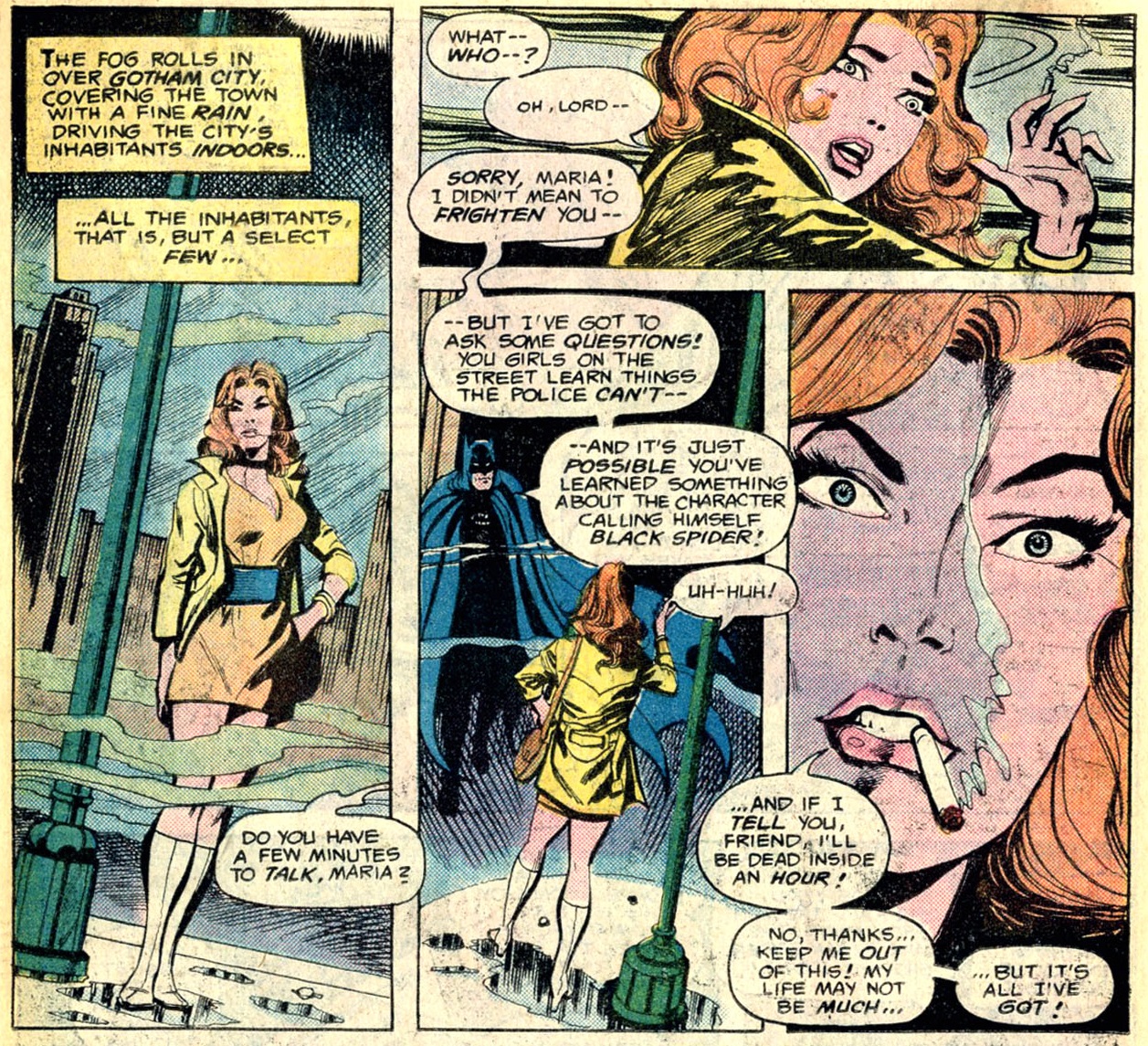 Detective Comics #464
Detective Comics #464
While City on a Hill has been doing its damned finest to emulate The Wire (albeit in Boston), in recent years the show that came the closest to recapturing that kind of TV magic was The Deuce, HBO’s 3-season series about the rise of New York’s sex industry, once again created by David Simon and George Pelecanos. And since Gotham City is often based on the type of 1970s’ and 1980s’ NYC depicted in The Deuce, that show inspired me to put together a few loose thoughts about sex workers in Batman comics.
It’s not an exhaustive overview, of course, because – trust me on this – for the past decades these supposedly kid-friendly comic books have been packed with loads and loads of pimps, punters, and prostitutes…
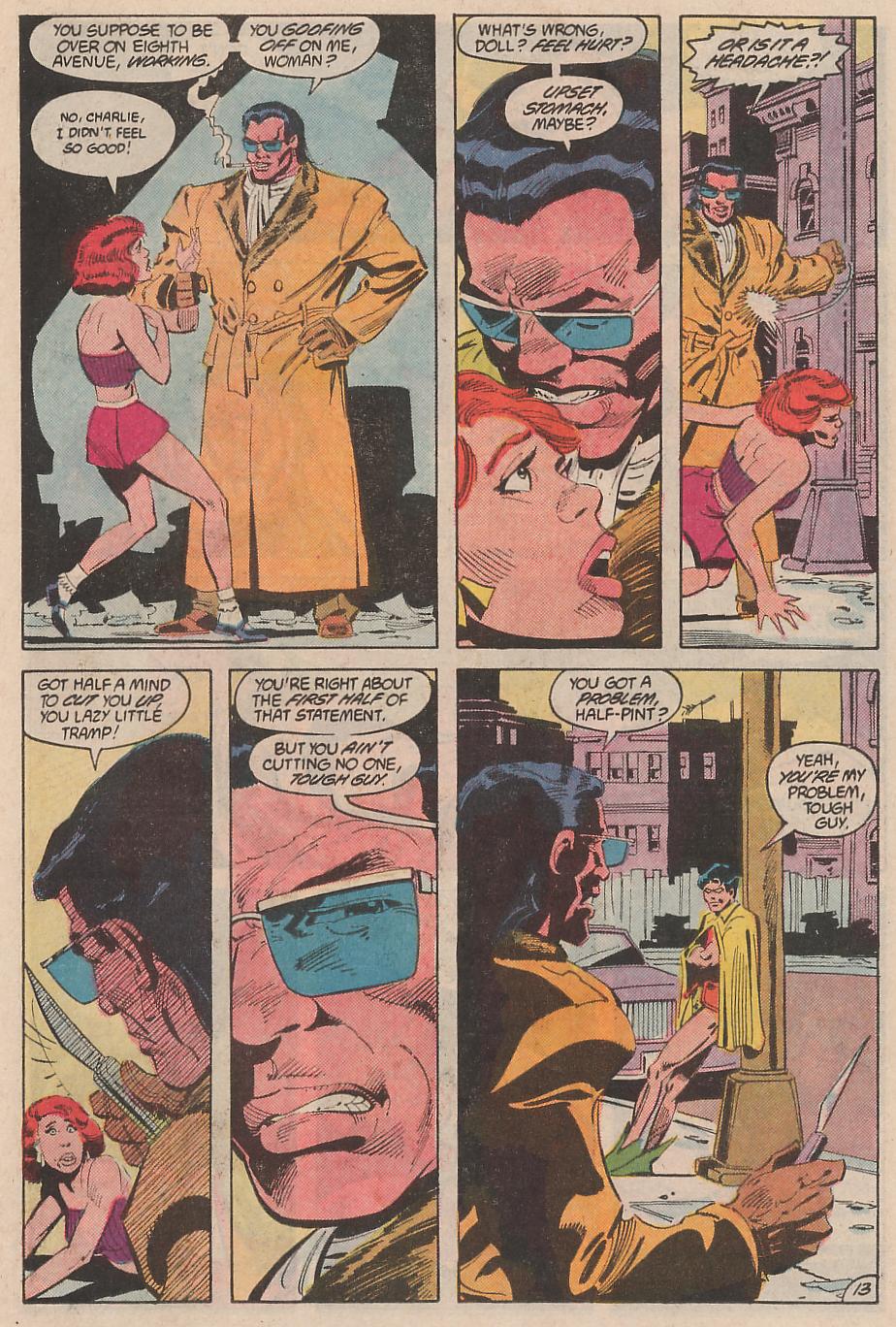 Batman #422
Batman #422
With his knack for sharp characterization, witty dialogue, gallows humor, and maximalist plotting that still manages to humanize the cast even as it shows them crushed by large institutions and historical processes, David Simon should be considered the Alan Moore of television. Certainly The Wire did for crime shows what Watchmen did for superhero comics, imbuing the genre with unprecedented sophistication and thought-provoking politics while preserving its entertainment value. Notably, they both get away with their fair share of geeky Easter Eggs and intertextual nods, which are just unobtrusive enough for those works to be highly appreciated by the genres’ fans and critics alike. (And, sure enough, just like the death of a major character in The Wire’s third season was a tribute to John Woo and just like Omar spent much of season four stuck in a parallel heist movie, so does the first season of The Deuce resonate with echoes of blaxploitation flicks like Super Fly and the amazing The Mack.)
One other thing Simon has in common with Moore is that, while their writing can surely be insightful and nuanced, it isn’t necessarily subtle. Thus, while The Deuce presents a multifaceted portrayal of prostitution that covers several dimensions, ambiguities, and contradictions, a strong thesis nevertheless shines through: sex workers deserve as much dignity and empathy as everyone else and, if there is any way of improving their lives, it’s not going to be by banning, censoring, and pushing them further underground.
Generally speaking, the moral compass of Batman comics isn’t far from this. The Dark Knight tends to treat sex workers in a friendly way, if not without a degree of snobbery or stigmatization…
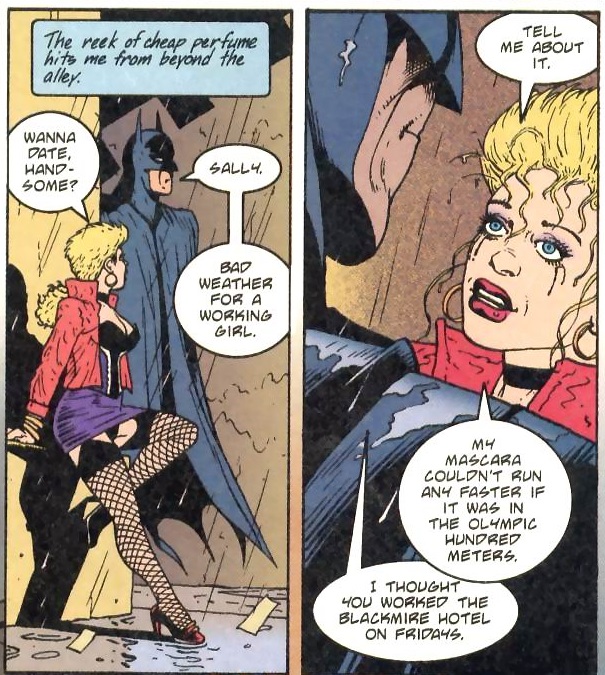 Legends of the Dark Knight #58
Legends of the Dark Knight #58
Although Batman isn’t an abolitionist, we get the sense he would rather Gotham’s streetwalkers would find another line of work… He doesn’t actually prevent them – or their pimps and clients – from carrying on (the way he seeks to prevent pushers and arms dealers, for example), yet he tries to discourage at least those who seem more vulnerable:
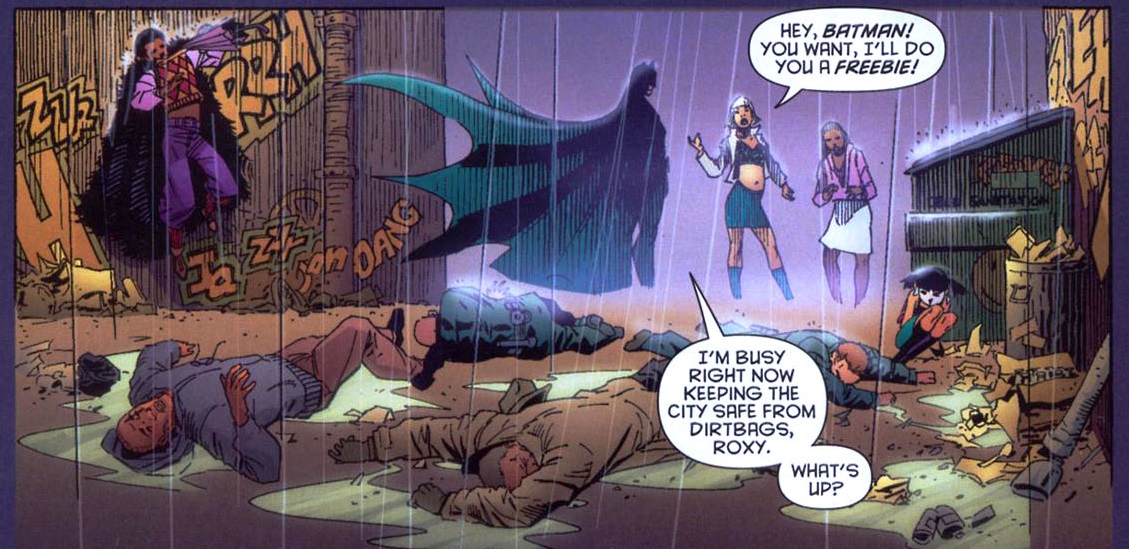
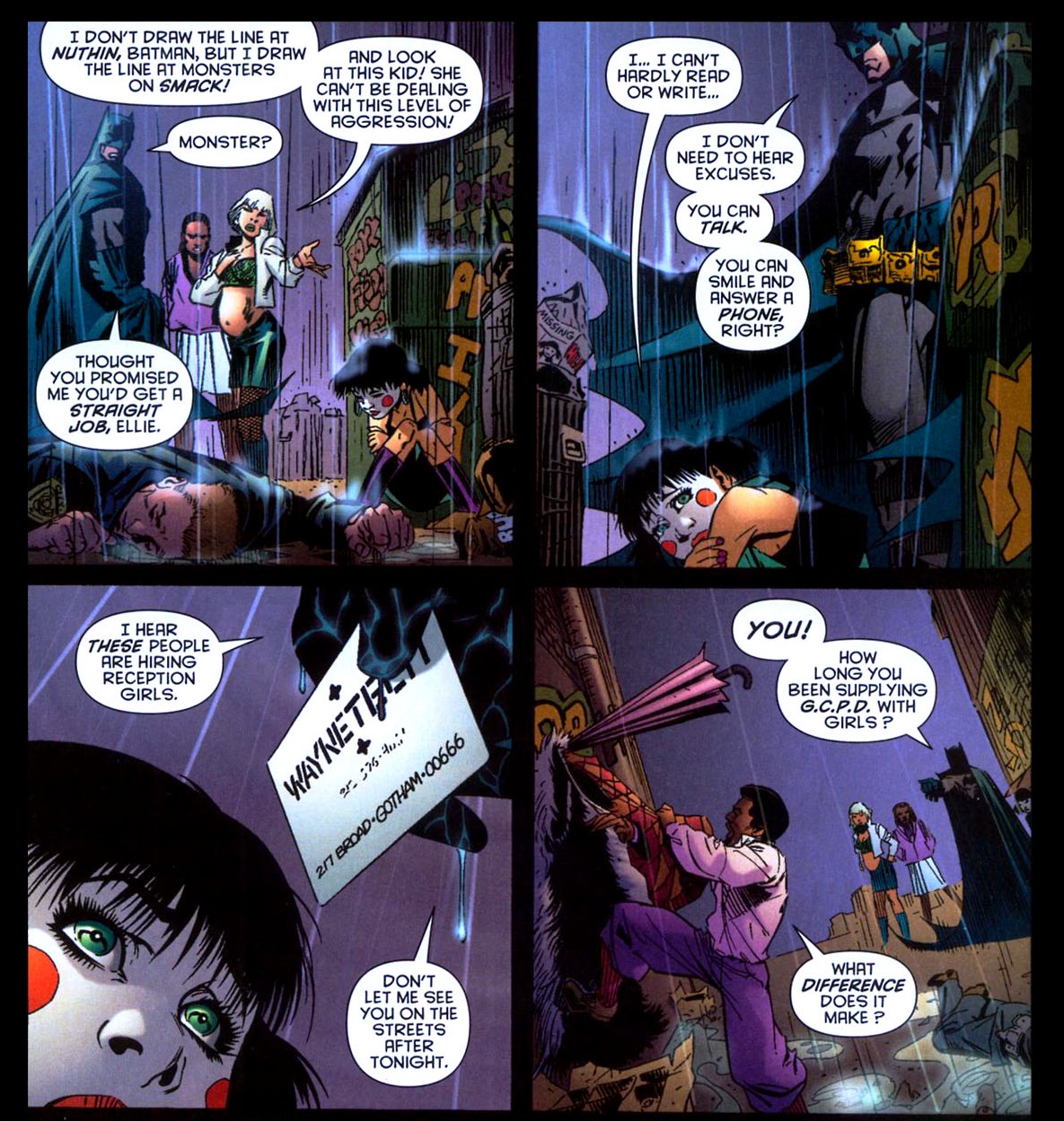 Batman #664
Batman #664
To be fair, I’m not sure how lenient the laws are in Gotham City… Perhaps voluntary prostitution is decriminalized or even legal. Not that he is exclusively concerned with enforcing the law, but Batman can sometimes be quite literal in his war on crime (he’s essentially overcompensating for Gotham’s corrupt police force), so this could help explain why the Caped Crusader only acts against sex trafficking while generally tolerating the clearly widespread licentious business going on in his city.
Jason Todd’s Robin, however, was another matter…
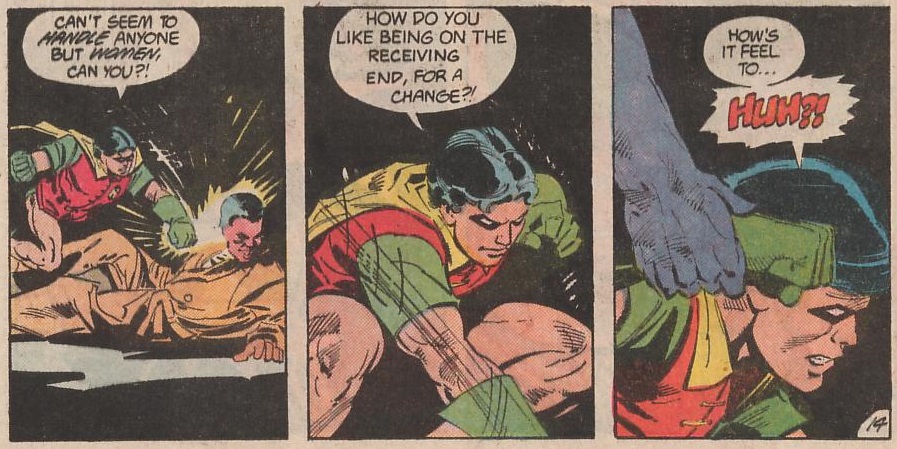
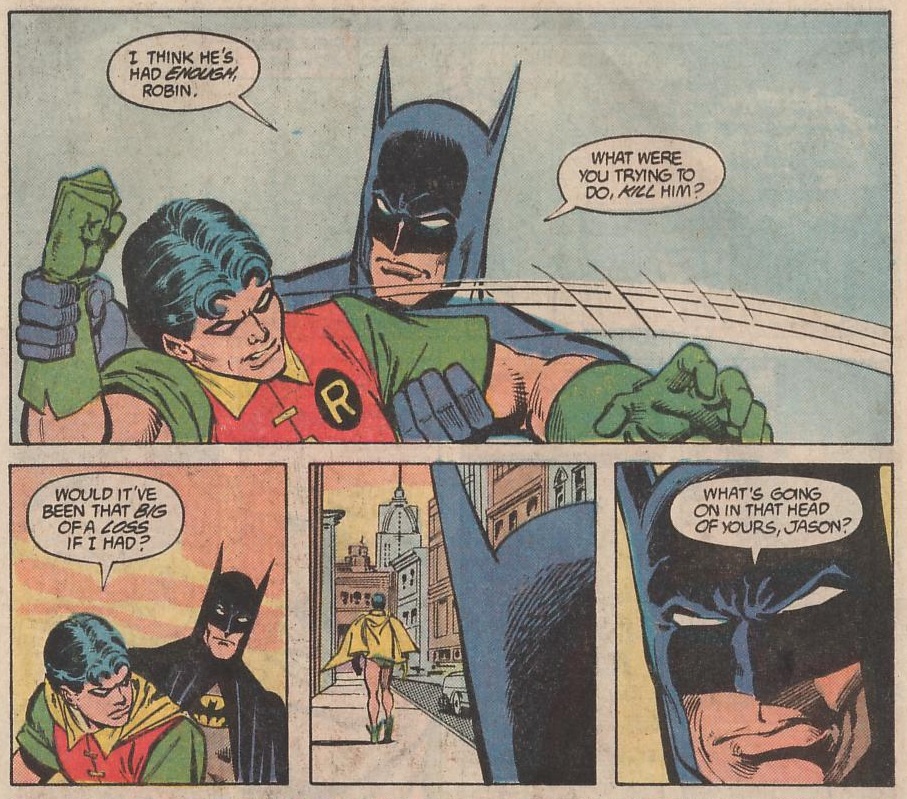 Batman #422
Batman #422
This is a revealing scene because Jason Todd’s arc as Robin was precisely that of caving in to negative, destructive emotions and becoming too extreme, intolerant, and vicious (in contrast to Robin’s usual function of bringing up Batman’s brighter side by countering his strictness with youthful empathy), for which he eventually got severely punished. In a typical move of late 1980s’ fiction, Jim Starlin’s run used violence against women as a way to make Jason’s outrage understandable – or even relatable – to readers. By and large, these comics depicted women, particularly prostitutes, as victims to be avenged (by men), preying on the era’s obsession with sexual violence and urban crime in order to dramatize the Dark Knight’s moral code, making him draw a line in the sand: regardless of his vigilante tactics, Batman wasn’t Dirty Harry or the Punisher.
At the time, Mike W. Barr pursued a similar storytelling strategy in ‘Batman: Year Two’ (Detective Comics #575-578), where Batman’s crime-fighting predecessor, now back in the game, was revealed to have been a ruthless homicidal fanatic who went by the name of Reaper (and who kept yelling ‘Fear… the Reaper!’), forcing the Caped Crusader to protect the very criminals he usually intimidates. There was a significant difference, though. The contrast between conservatism and liberalism was much more pronounced here, as the Reaper saw sex work as immoral in itself (i.e. not just because he cared about female exploitation), so his approach to the issue didn’t discriminate between the role of women and men:
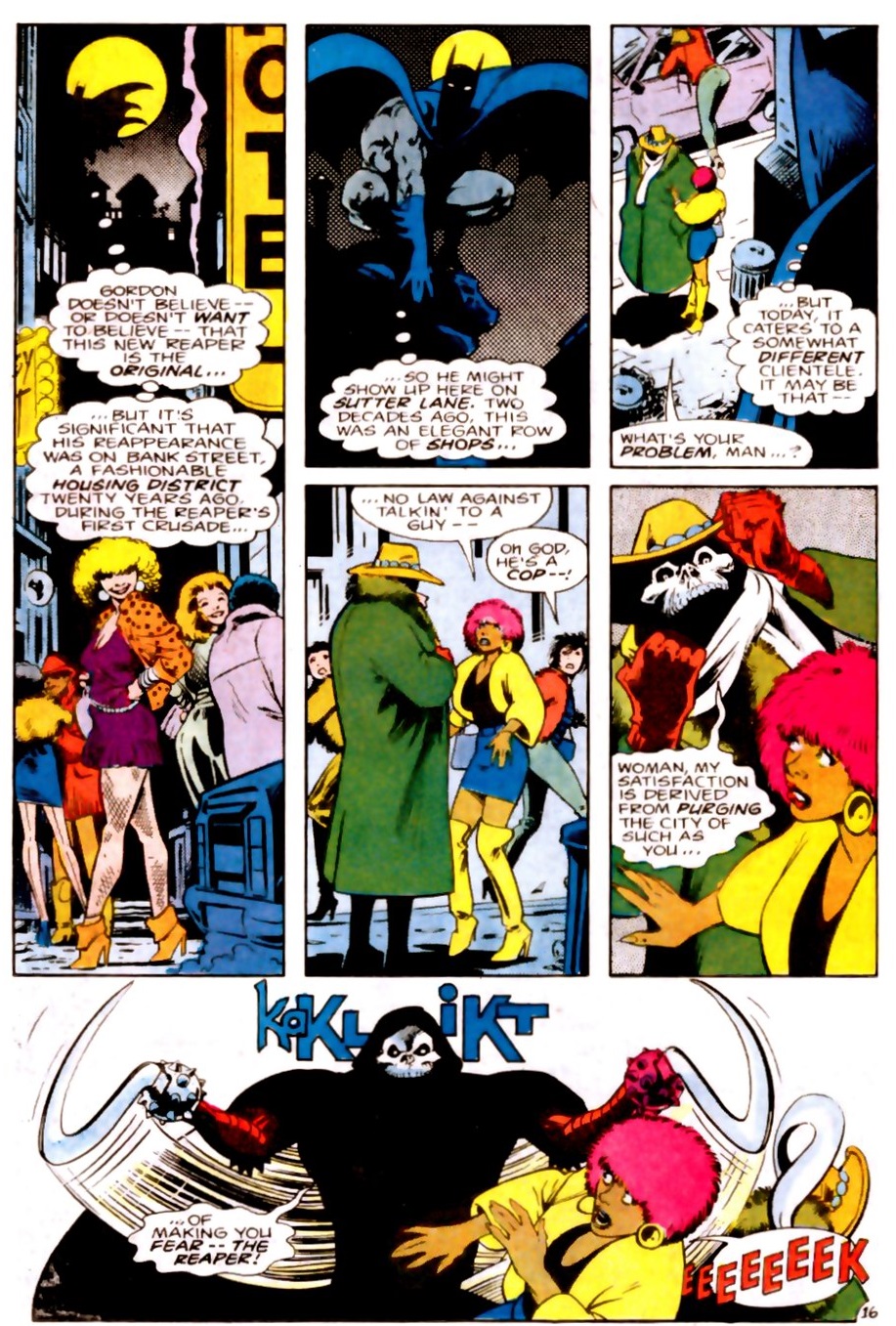 Detective Comics #575
Detective Comics #575
Notably, the same creative team – Mike Barr and Alan Davis – had established the Caped Crusader’s respectful attitude towards working girls just a few issues before, accompanied by their (much more upbeat) version of Jason Todd…
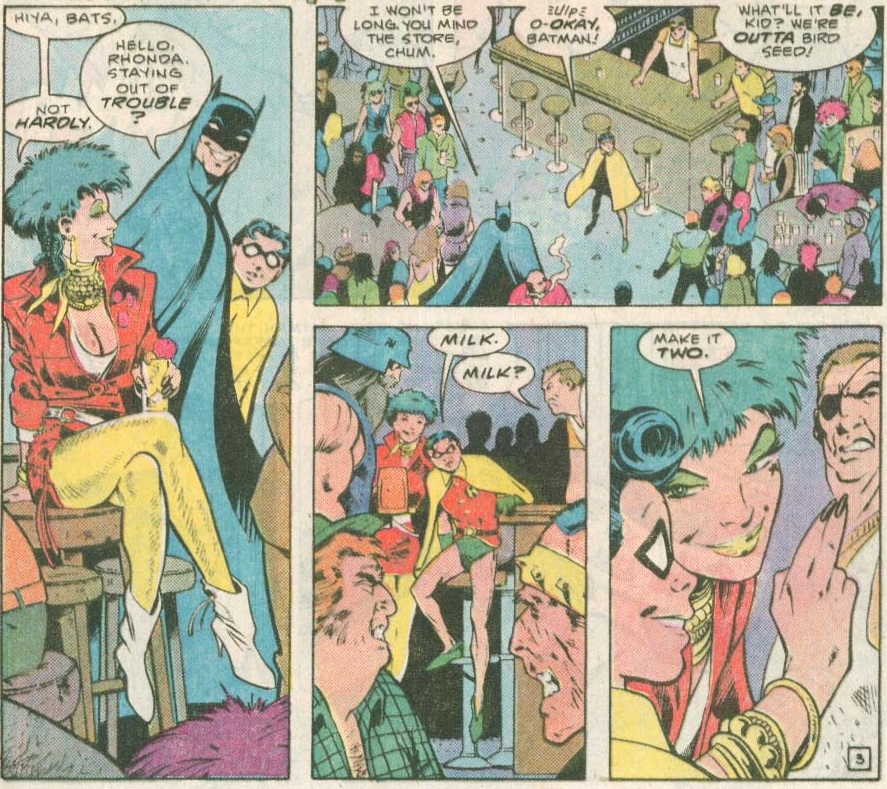 Detective Comics #570
Detective Comics #570
Rhonda, seen in the scene above, is a rare sex worker in Batman comics who actually shows up more than once, always as a sympathetic character. Barr and Davis brought her back in their Batman: Black & White backup ‘Last Call at McSureley’s’ (originally published in Gotham Knights #25) as well as in the sequel to ‘Batman: Year Two,’ the one-shot Full Circle, where she almost gets slashed by the Reaper herself:
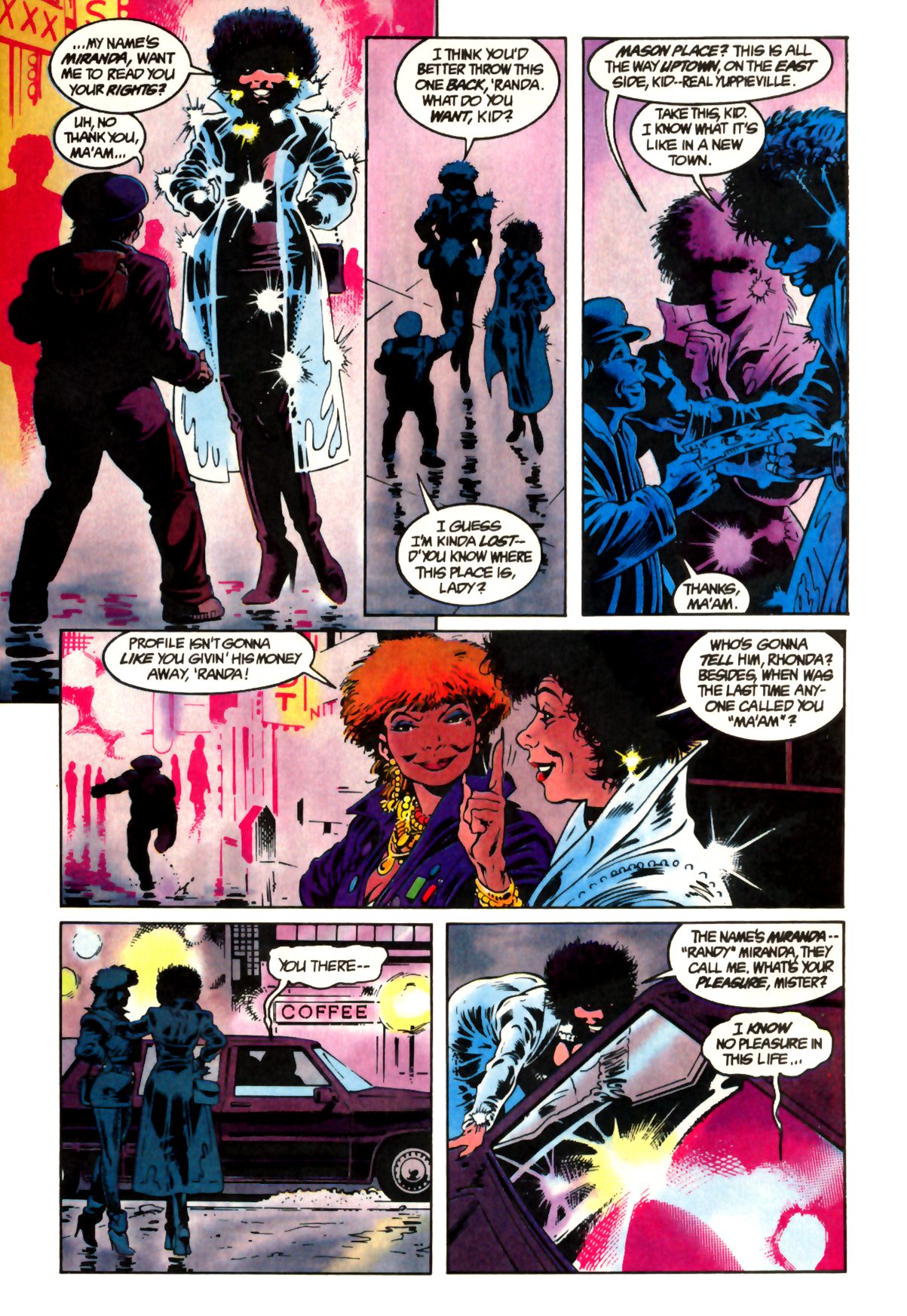
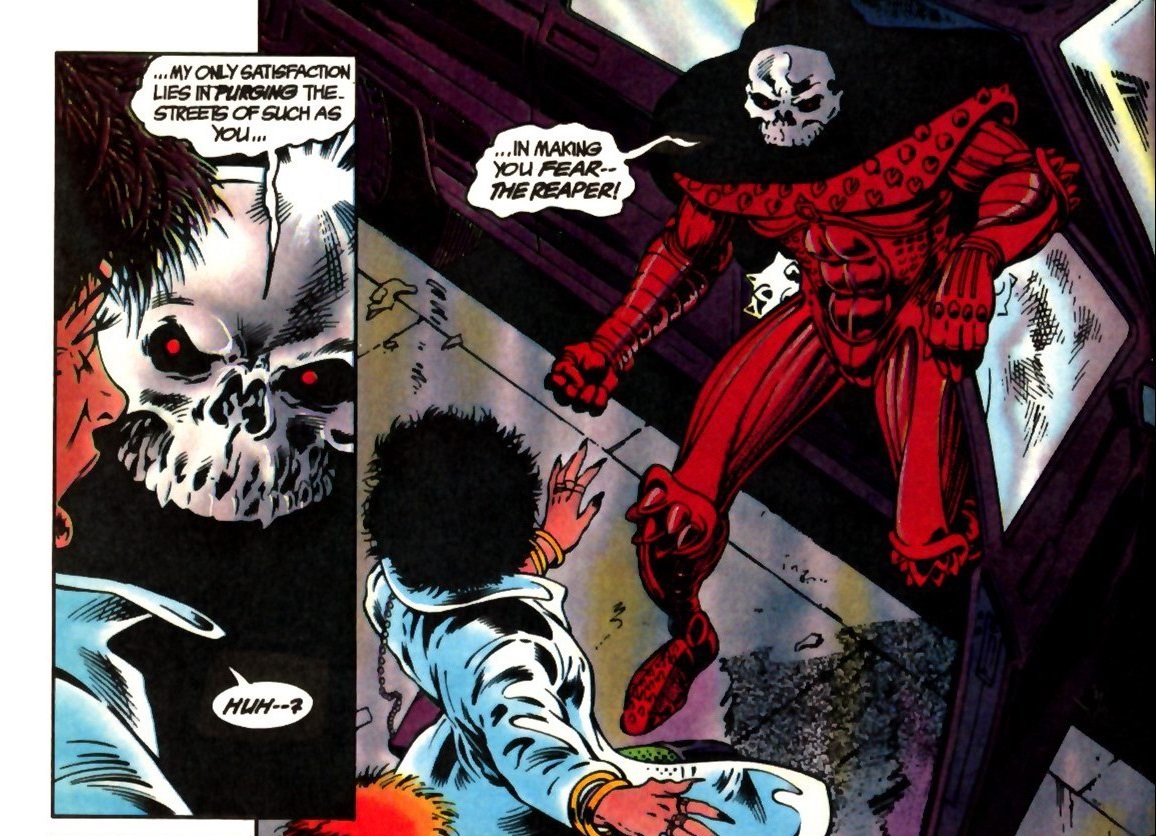 Full Circle
Full Circle
Not that Rhonda gets much actual characterization in her brief appearances… She isn’t exactly Candy in The Deuce. The latter is a properly fleshed out character, human and conflicted, complete with individual agency and a believable psychology, brought to life by a typically awesome Maggie Gyllenhall, who conveys a sharp intelligence and determination while also projecting a deep interior (indeed, one of the many ways in which 2008’s The Dark Knight is vastly superior to 2005’s Batman Begins is that it’s much more convincing to imagine Bruce Wayne falling for a feisty Gyllenhall than for Katie Holme’s milquetoast version of the same character in the earlier movie).
Off the top of my mind, only two sex workers in Batman comics have gotten proper character development over the years. In both instances, it all goes back to this one sequence in 1986’s ‘Batman: Year One’ about Bruce’s first stab at the vigilante thing:
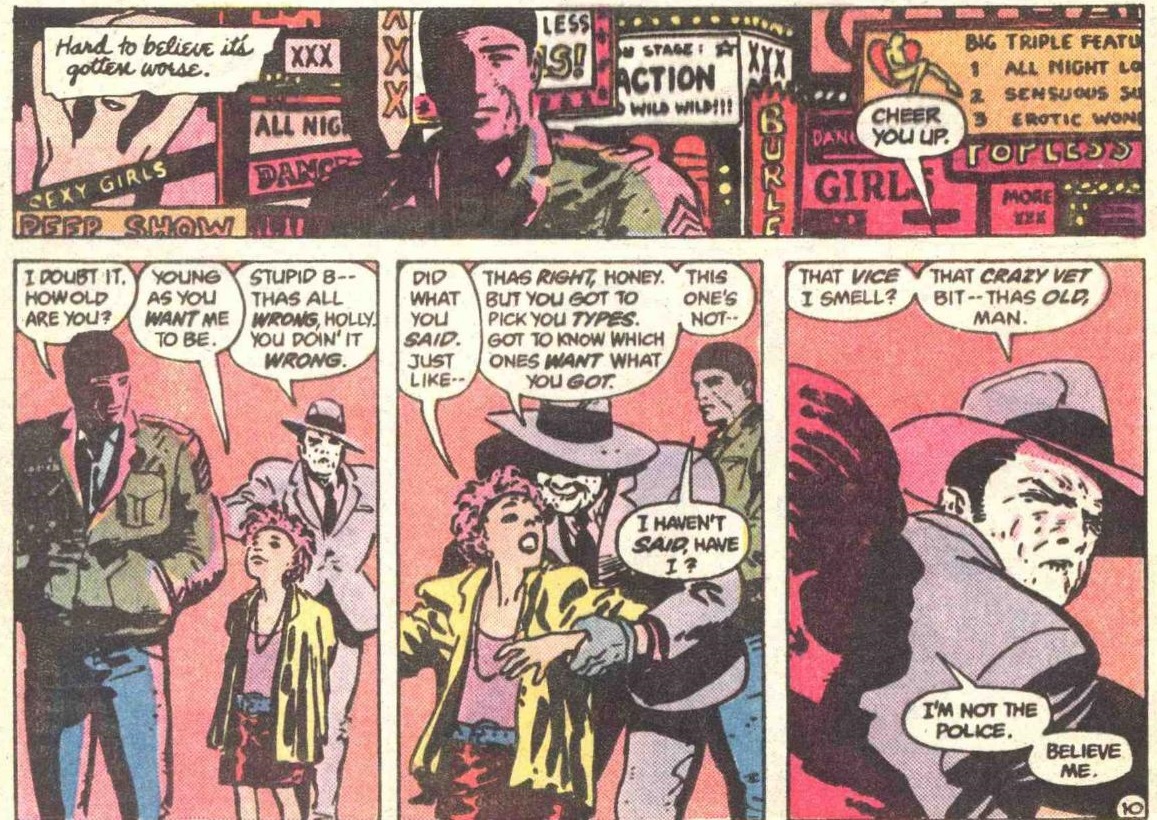
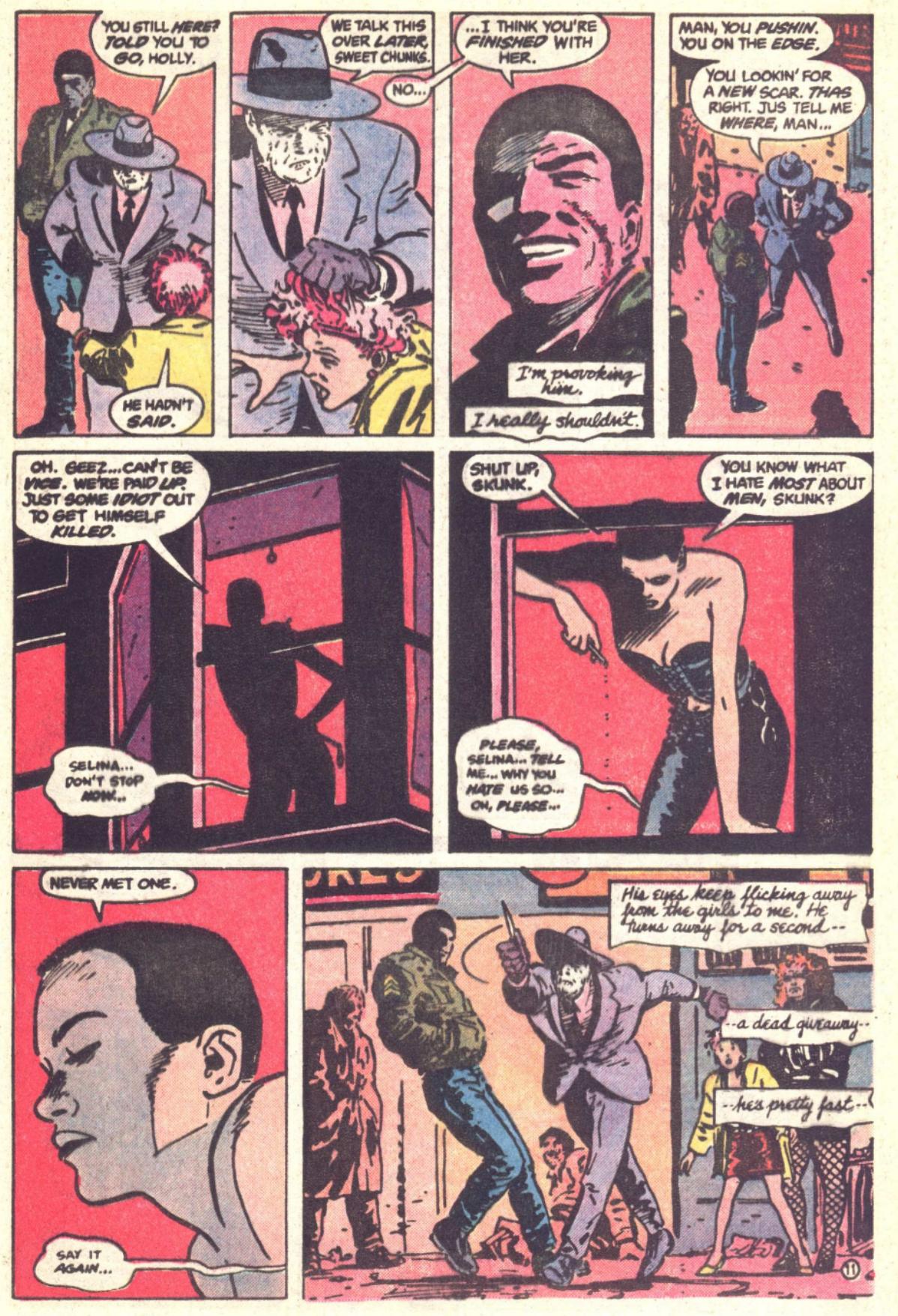 Batman #404
Batman #404
This is such a foundational scene that Mindy Newell and J.J. Birch recreated it in their 1989 Catwoman spin-off, from Selina’s perspective, albeit switching the order a bit so as to give the montage a more frantic rhythm:
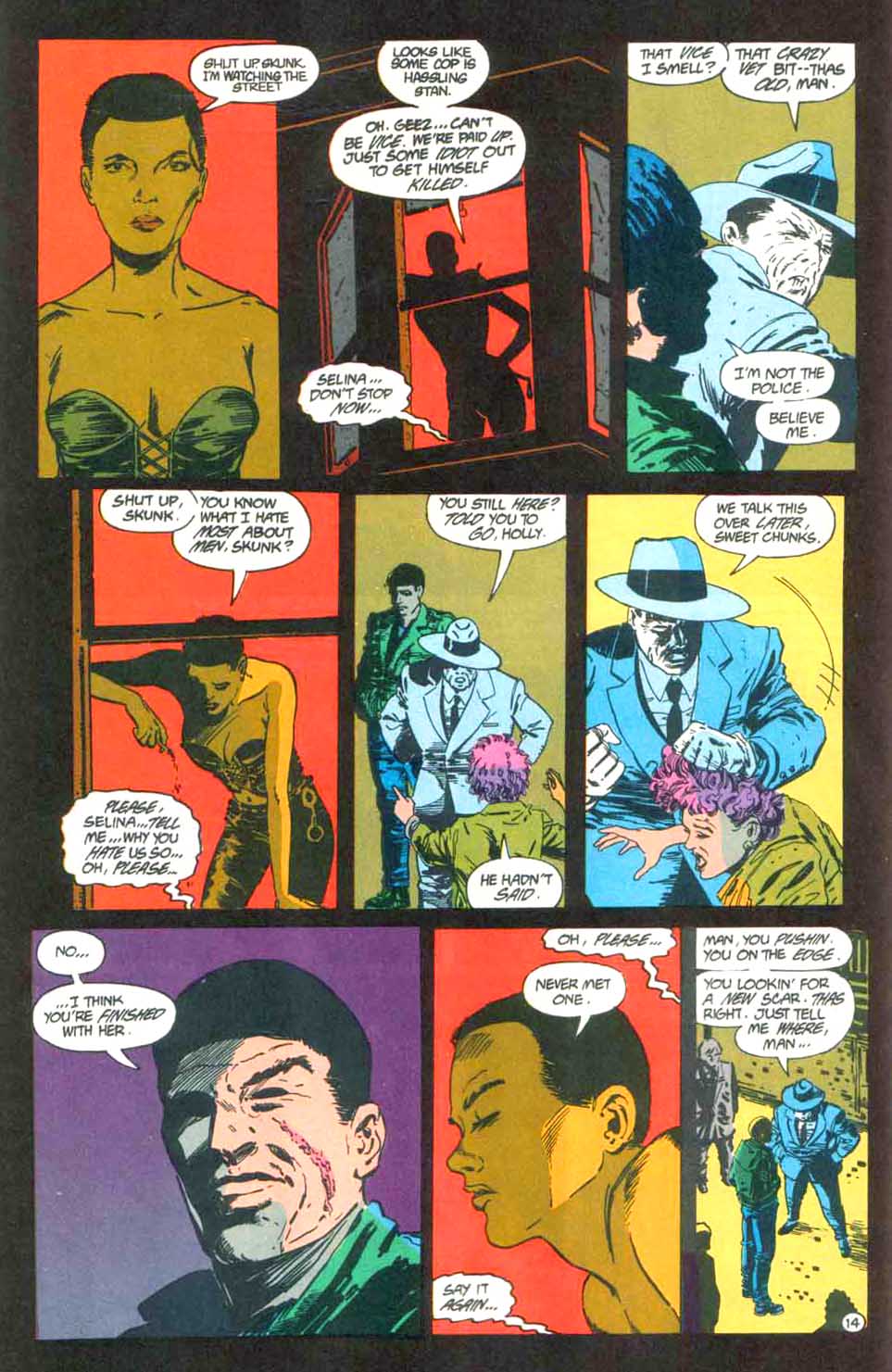 Catwoman #1
Catwoman #1
It’s not surprising the original had such an impact. This is a great – and gritty – scene (in a book that’s full of great – and gritty – scenes). Sure, Frank Miller’s script and David Mazzucchelli’s artwork are clearly riffing on Jodie Foster’s underage prostitute from Taxi Driver, but they soon introduce a twist into the whole trope of the patriarchal savior. Because this was written by a younger Miller (rather than the caricature he later became), the scene goes on to show that the world is much messier and more morally complicated that what this pre-Batman Bruce Wayne expected, effectively challenging his proto-Travis Bickle mentally…
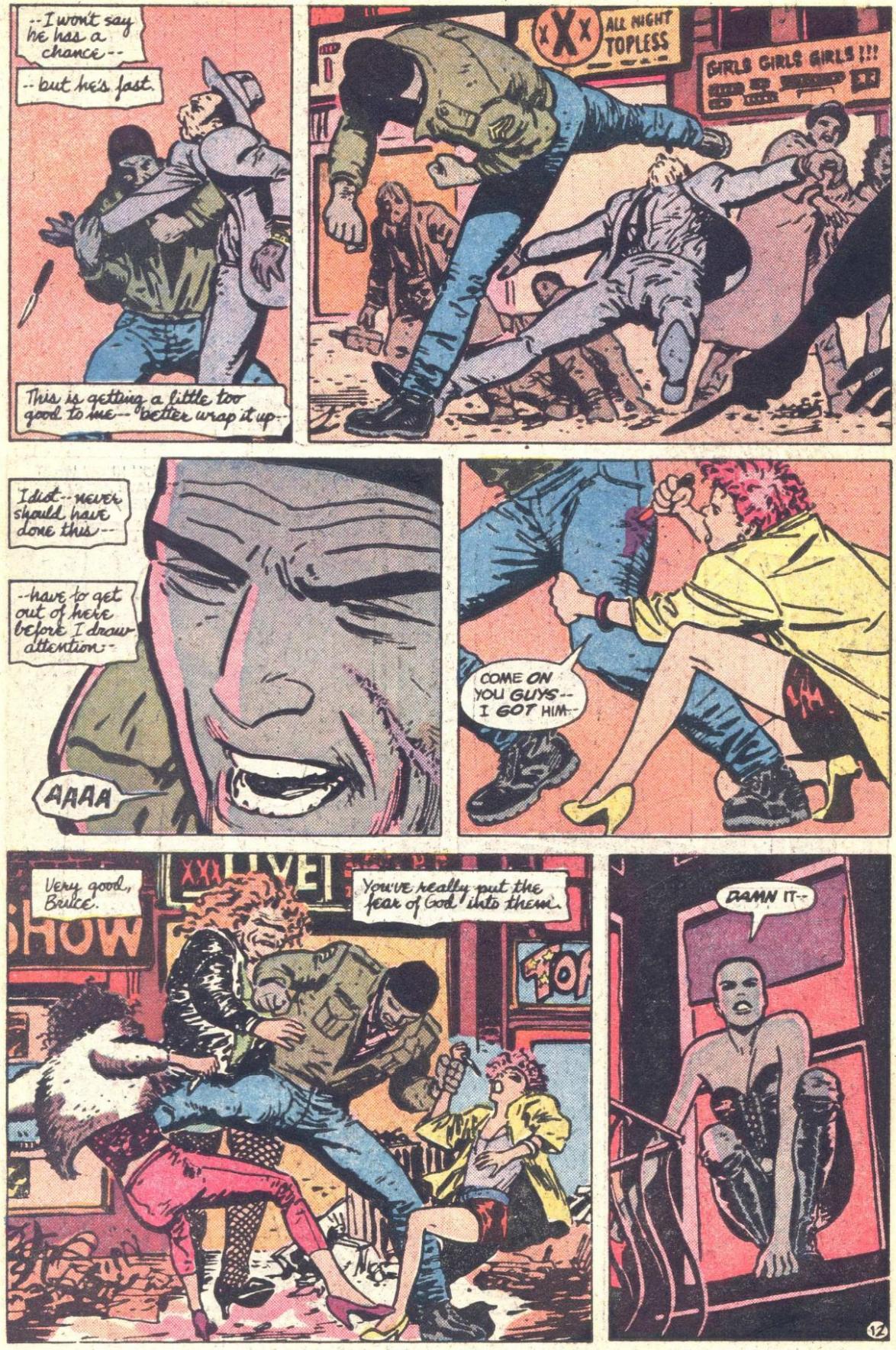 Batman #404
Batman #404
Seeing the prostitutes attack Bruce to defend/avenge their pimp (or perhaps just to protect their livelihood and freedom, because they suspect he’s a cop), just like seeing our hero struggle with a bunch of streetwalkers (including a child), is a powerfully discomfiting visual – not because it makes any specific point about the topic, but because it conveys a general sense of confusion, frustration, and desperation over a fucked up society without easy solutions. It makes one yearn for a Caped Crusader fighting costumed villains who are proudly evil!
Make sure to come back next week when we’ll follow the path of two of these sex workers in the ensuing Batman comics…
